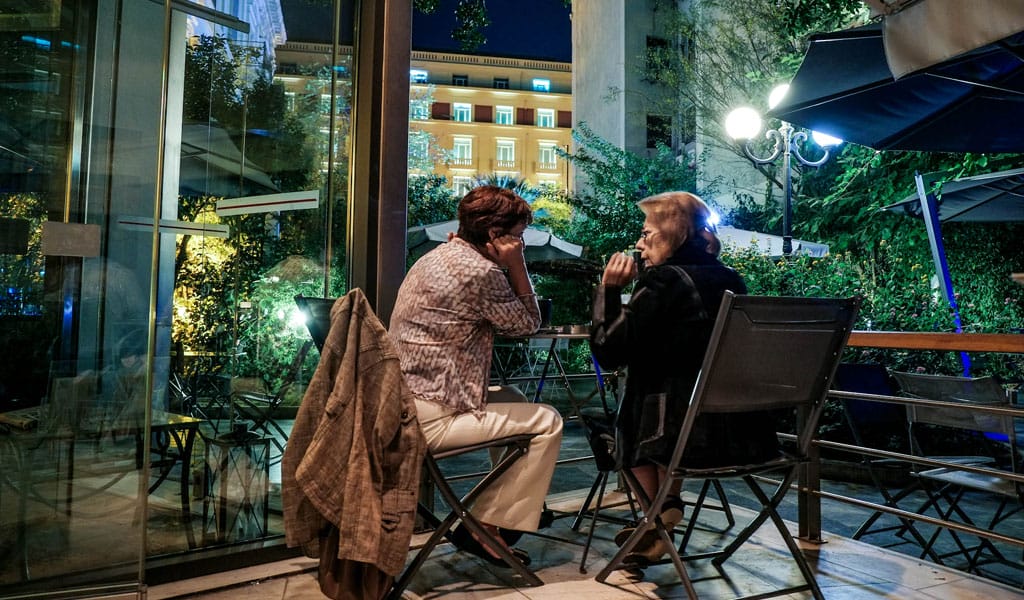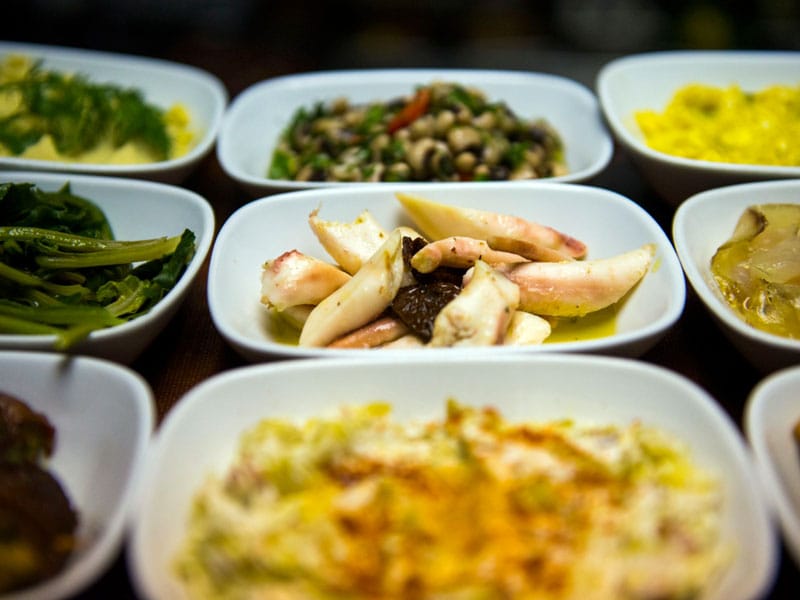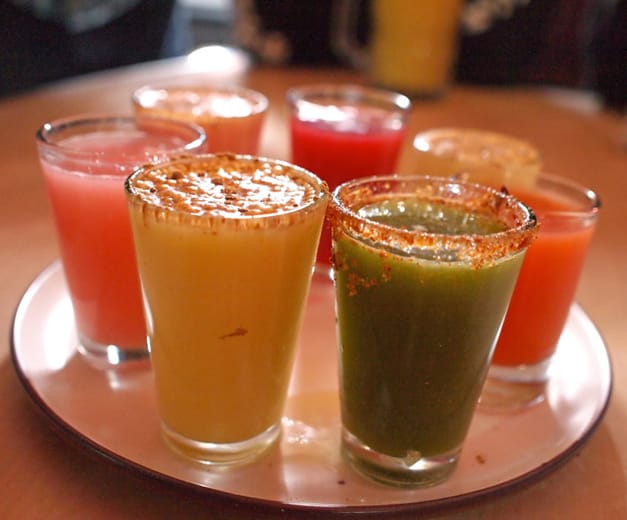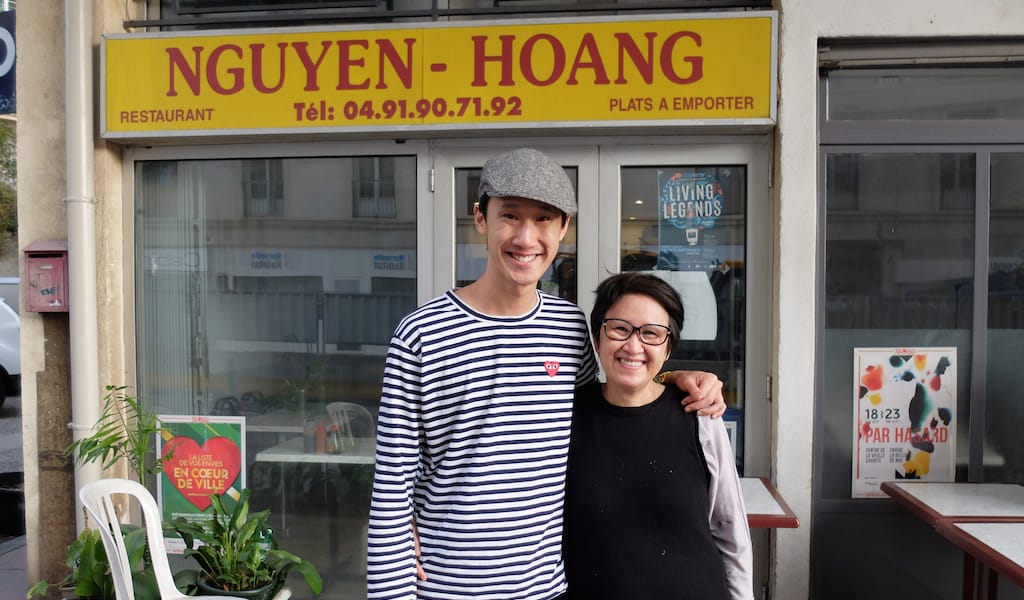In terms of greenness, Athens doesn’t even come close to other European capitals, with their verdant parks and blossoming gardens. The truth is, modern urban development has not been particularly gentle with this city. Numerous concrete buildings, along with poor road design, hem in inhabitants and visitors with featureless views. Thankfully, there are some oases in the cement desert that offer the hungry local or tourist a lush respite in which to enjoy a meal or a drink.
Just behind Parliament lies the Ethnikos Kipos, or National Gardens, the indisputable green heart of the city. Back in 1836, Queen Amalia had envisioned the royal gardens to follow the European models of the era, and so agronomist Frederick Schmidt, director of the gardens for almost 30 years, planted native flora from Cape Sounion and the island of Euboea, as well as many species from abroad that were suited to the Attica climate. Today, the gardens are home to more than 50,000 trees and shrubs and are open to visitors from morning to dusk. The gardens’ café sits at the Irodou Attikou entrance, with retro green tables arrayed symmetrically in the relaxing shade of the alleyway. After a morning walk, we enjoyed a cup of Greek coffee and an orange soda. The menu offers dishes such as tzatziki, octopus stewed in vinegar sauce, marinated anchovies and meatballs with potatoes, but we’re not convinced they’re worth the price, so we advise sticking to ouzo, raki or some other liquid repast.
A few steps away from the Syntagma metro, a heavy iron gate stands guard over the former residence of the German archaeologist Heinrich Schliemann. Designed by none other than the eminent Ernst Ziller, the architect of many of Athens’ royal and municipal buildings, the Renaissance-inspired structure was named Iliou Melathron, or Trojan Mansion, in tribute to the owner’s passion for the mythical city of Troy (also known as Ilion). Iliou Melathron is now home to the Numismatic Museum, and the beautiful garden, where Schliemann spent hours planting and taking care of his trees, still includes many species of Greek flora, with reproductions of ancient Greek statues peeking through the foliage.
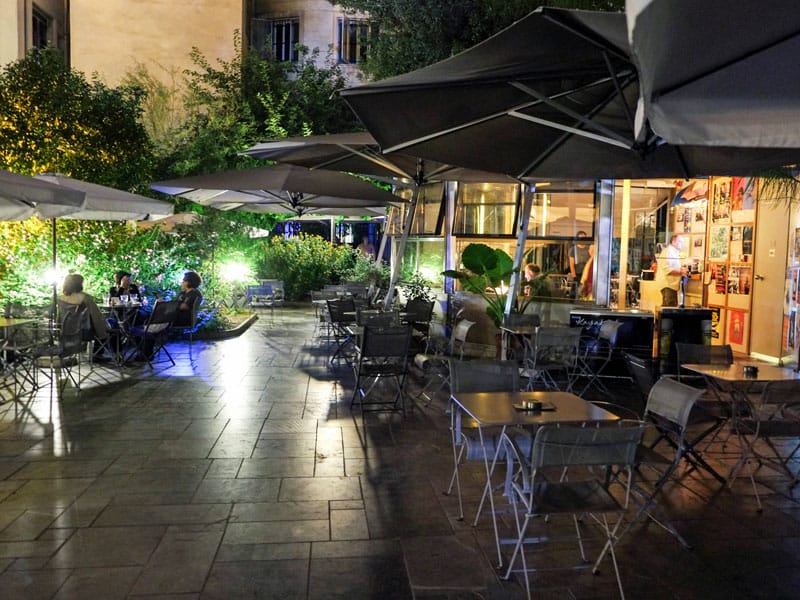
On a recent visit to the garden, we chatted with a friend over a cup of jasmine green tea and then ordered a few small bites to fortify us for a walk. The star of the mezes, which featured mostly seafood, was the avgotaraho, also known as botargo, which, like Italian bottarga, is cured and dried mullet roe. This so-called Greek caviar, from the seaside town of Mesolongi, had a chewy, velvety texture and smelled intensely, and pleasantly, of the sea. Boldly flavored sardine fillets on toast with slightly peppery Cretan cheese were a wonderful accompaniment to a glass of white wine. We also tried a slice of vegetable tart made from zucchini, potatoes, carrots, fennel and cheese. The party seated at the next table raved about the apple pie, so we’ll have to go back (in the name of research, of course).
The Black Duck Garden, located on Klauthmonos square between Omonia and Syntagma, is housed in one of the city’s oldest surviving neoclassical buildings. Constructed in 1833, it was the temporary palace of King Otto and Queen Amalia. Back then, its massive garden, planned by the queen herself, reached all the way up to Kolokotroni Square. Today the garden is much smaller, and Black Duck shares the building with the City of Athens Museum. It’s an ideal getaway for a quiet coffee or a glass of wine paired with a Greek cheese platter. Food is served between 10 a.m. and 7 p.m. There’s breakfast, brunch, all-day snacks like sandwiches and fresh salads and main dishes with royal flair – like the slow-roasted guinea fowl served with carrot purée, black sesame seeds and pickled carrots.
Six D.O.G.S.’s backyard is no mere urban garden. Less than a five-minute walk from the Monastiraki metro, the entrance is located on Avramiotou, a small, narrow street parallel to Athinas. Six D.O.G.S. (“Degrees of Global Separation”) is a cultural venue that opened its doors in 2009 and expanded the following year with the garden, which sits next to a performance space, bar and project space that hosts everything from art exhibitions to clothing swaps. A neon sign directed us down the stairs to a place that genuinely felt like a secret hideout. Surrounded by charmingly dilapidated old buildings, we were faced with a tough decision: handmade hammock or cozy wooden chair? We enjoyed the refreshing, just-sweet-enough lemonade and sour cherry juice, both made in-house, and shared a fresh and fluffy tiramisu. We’ll go back for their popular bagels, such as the vegetarian (cream cheese, sun-dried tomato and basil pesto) or Greek-style (tomato, oregano and olive pâté), three kinds of pizza, nachos with homemade guacamole and the hot D.O.G.S., in a classic version and with spicy sausage, ketchup, mayo and a Mexican-style chili sauce. Everything is prepared fresh daily from seasonal ingredients.
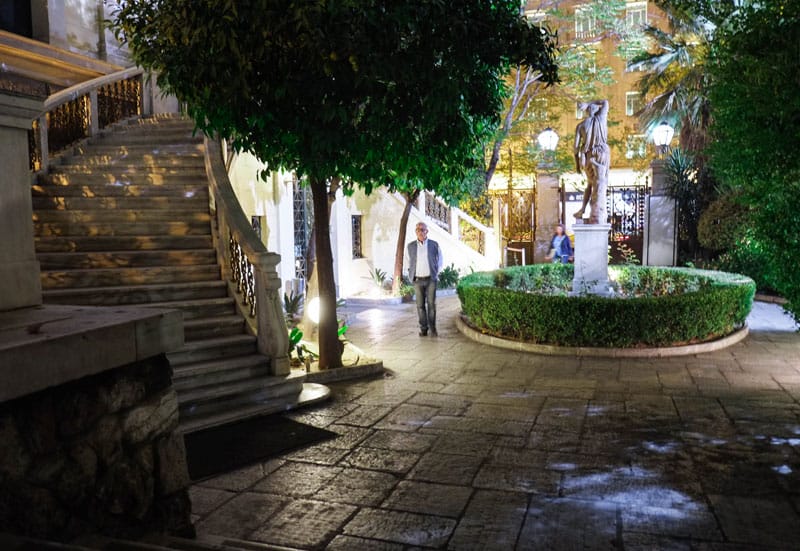
Hidden behind high walls, away from the noise of the busy touristy area of Anafiotika in Plaka, the nonprofit Alumni Association of the School of Fine Arts (Enosi Ptichiouchon Scholi Kalon Technon), with its old marble statues and lovely details, has the artiest green courtyard in the city. The old-fashioned coffee-shop tables and the built-in benches under the tall, leafy trees contribute to a warm, convivial atmosphere. The self-service bar is located inside the building, where temporary student art exhibits take place. To buy a coffee, you’ll have to register as a helper member for the minimum amount of €2.50, a symbolic gesture that helps cover the organization’s costs, as it receives no state funding. There’s no food, but there’s plenty of art and atmosphere to feed your soul.
Editor’s note: It’s Spring Week at Culinary Backstreets, and we’re celebrating with dispatches about warm-weather favorites from a few of the cities we cover.
This feature was originally published on November 5, 2013, and has been updated to include an additional venue.
 July 22, 2013 Cibalikapı Balıkçısı
July 22, 2013 Cibalikapı Balıkçısı
On a night out in Istanbul, we often find ourselves forced to make sacrifices in one or […] Posted in Istanbul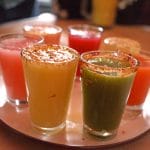 October 18, 2013 Pulque
October 18, 2013 Pulque
Milky, tart, viscous and slightly foamy. At first glance and sip, there’s little to […] Posted in Mexico City January 5, 2022 Nguyen-Hoang
January 5, 2022 Nguyen-Hoang
After the Vietnamese War, many of the refugees bound for France landed in Paris. A […] Posted in Marseille
Published on April 20, 2017
Related stories
July 22, 2013
IstanbulOn a night out in Istanbul, we often find ourselves forced to make sacrifices in one or more categories of the overall dining experience. Great food at reasonable prices will surely be laid out in a room decorated in Anatolian kitsch. Bosphorus views and contemporary furnishings are a license to gouge and serve up flaccid…
October 18, 2013
Mexico CityMilky, tart, viscous and slightly foamy. At first glance and sip, there’s little to explain why pulque – a mildly alcoholic drink made by fermenting the fresh sap of certain types of maguey, the same plant used for making mezcal – has remained a trusted companion to Mexican drinkers since Aztec times. Pulque, actually, has…
January 5, 2022
MarseilleAfter the Vietnamese War, many of the refugees bound for France landed in Paris. A minority spread out to other French cities like Toulouse, Lyon and Marseille, the latter being a ville refuge (refuge city) due to its bustling port. The small community in Marseille used to be concentrated near Joliette, before its building boom.…







































